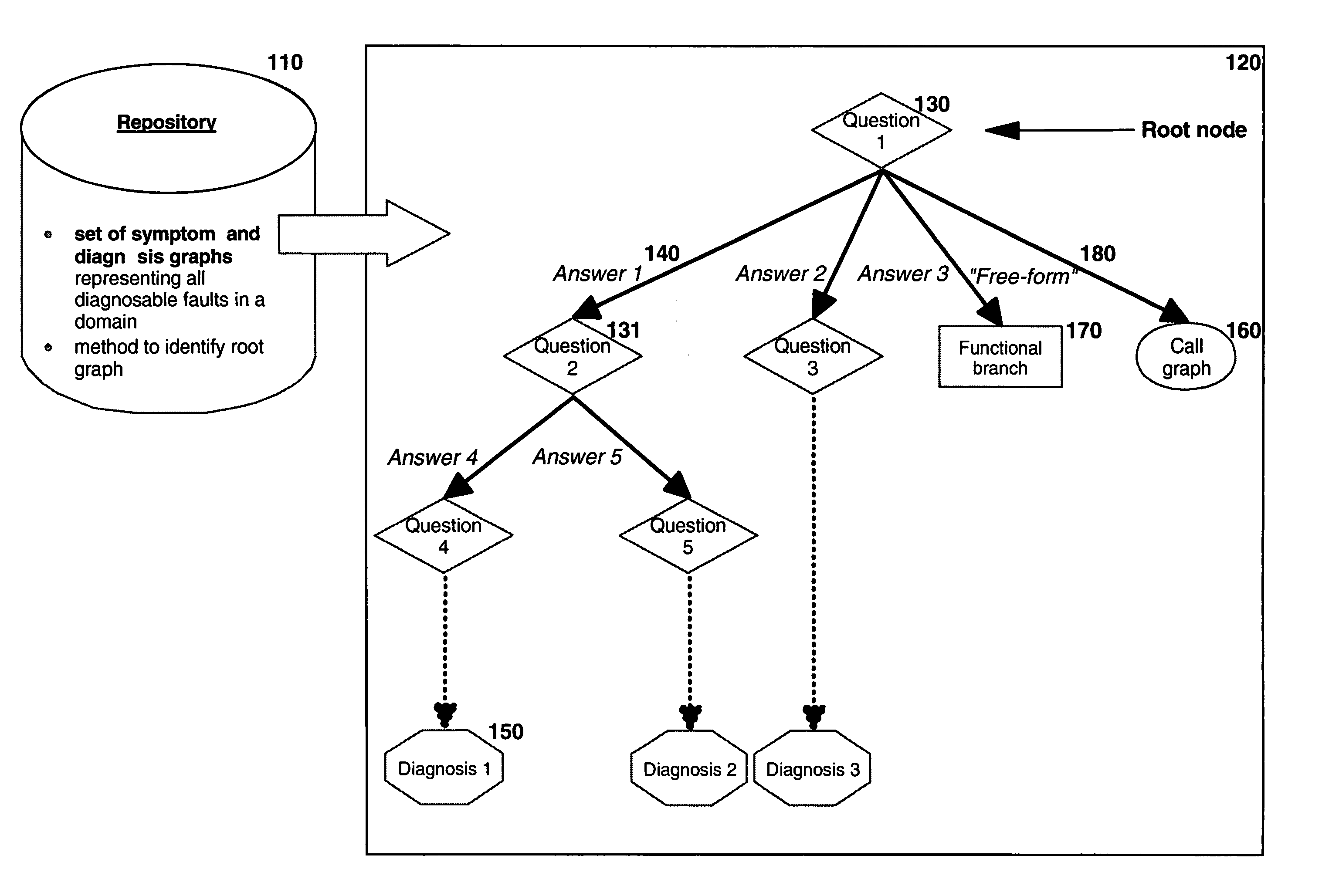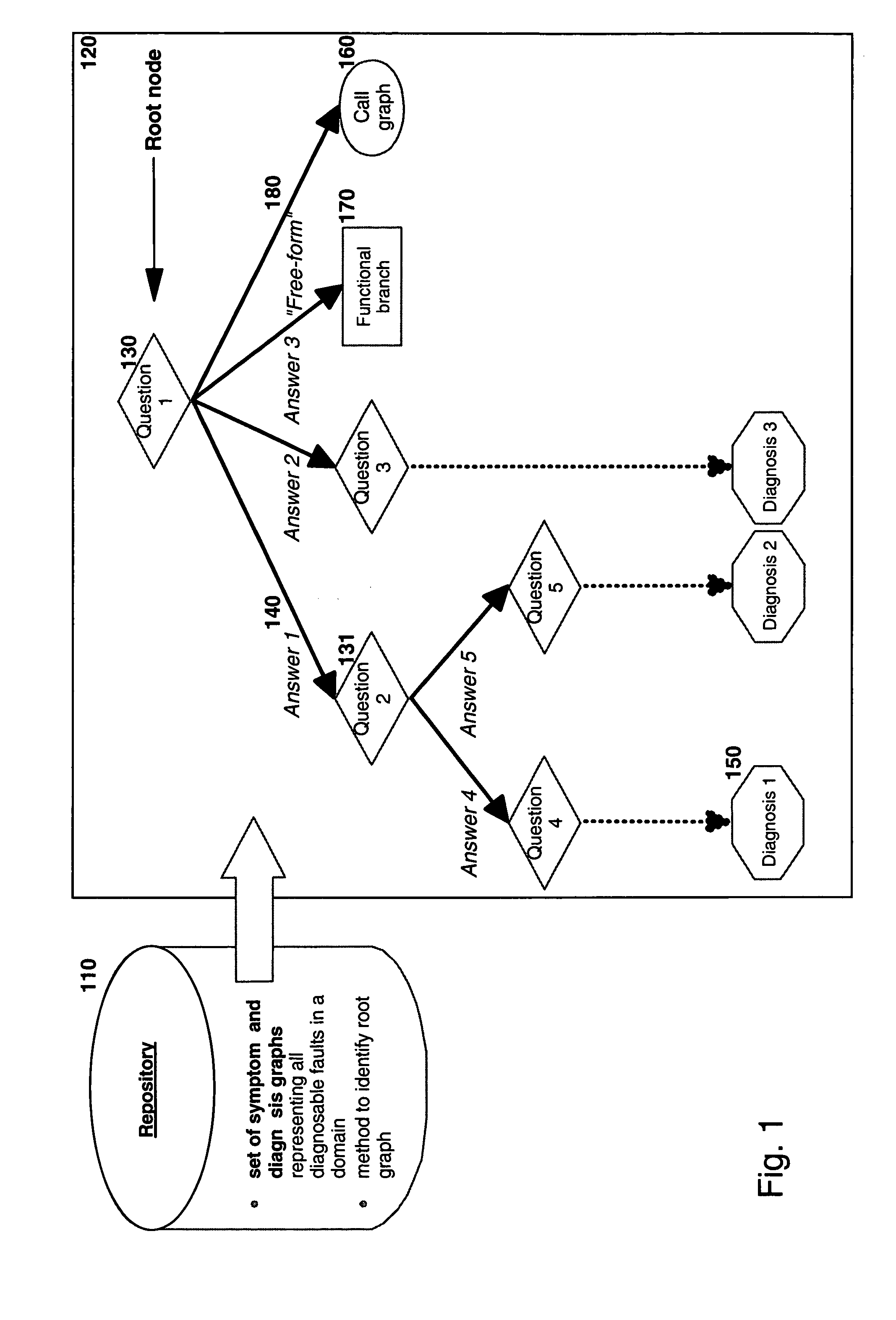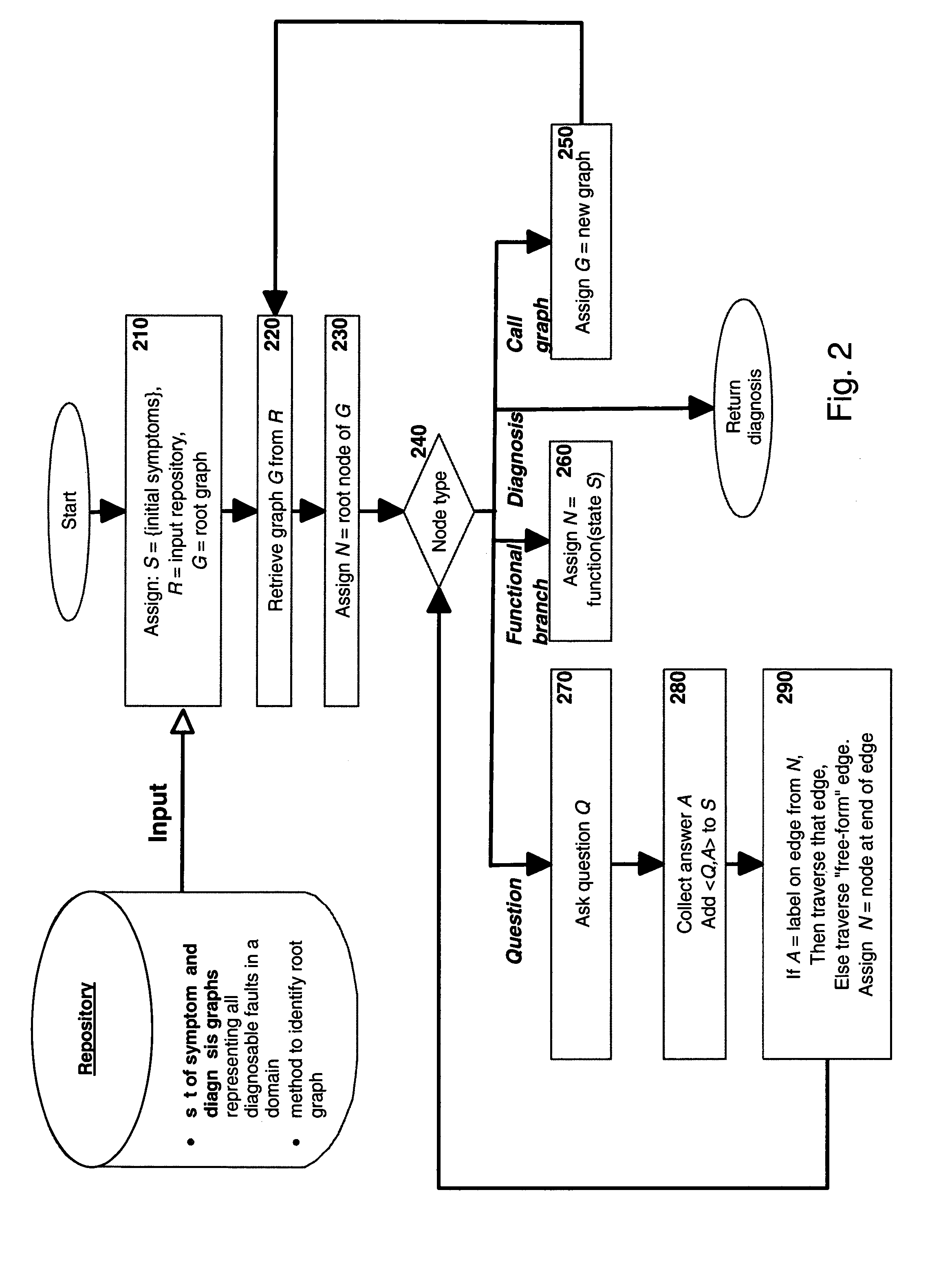Diagnosing faults and errors from a data repository using directed graphs
a data repository and fault technology, applied in the field of fault diagnosis from a data repository, can solve the problems of large database of faults, questions, answers that must be downloaded to the stand-alone client, and single-user solutions, so as to reduce the number of transmissions, reduce latency, and reduce the number of databas
- Summary
- Abstract
- Description
- Claims
- Application Information
AI Technical Summary
Benefits of technology
Problems solved by technology
Method used
Image
Examples
Embodiment Construction
[0031]The present invention provides methods, systems and apparatus for fault diagnosis which reduces latency due to downloading and installing a large database and reduces the number of transmissions between user and the remote repository. The necessity for transmitting each question and answer is reduced or eliminated and, by encoding the questions and answers, the latency is reduced. The present invention places all the steps of the process upon the client, gaining all of the advantages of the single-client solution. However, it avoids the single-client solution drawback of the potentially large database download by downloading portions of the database onto the client as needed. These portions are significant enough in size to allow the process to run through many passes without returning to the server, but small enough to avoid delays in the diagnosis session due to the network latency. This substantially reduces the number of network transmissions and server interactions needed...
PUM
 Login to View More
Login to View More Abstract
Description
Claims
Application Information
 Login to View More
Login to View More - R&D
- Intellectual Property
- Life Sciences
- Materials
- Tech Scout
- Unparalleled Data Quality
- Higher Quality Content
- 60% Fewer Hallucinations
Browse by: Latest US Patents, China's latest patents, Technical Efficacy Thesaurus, Application Domain, Technology Topic, Popular Technical Reports.
© 2025 PatSnap. All rights reserved.Legal|Privacy policy|Modern Slavery Act Transparency Statement|Sitemap|About US| Contact US: help@patsnap.com



